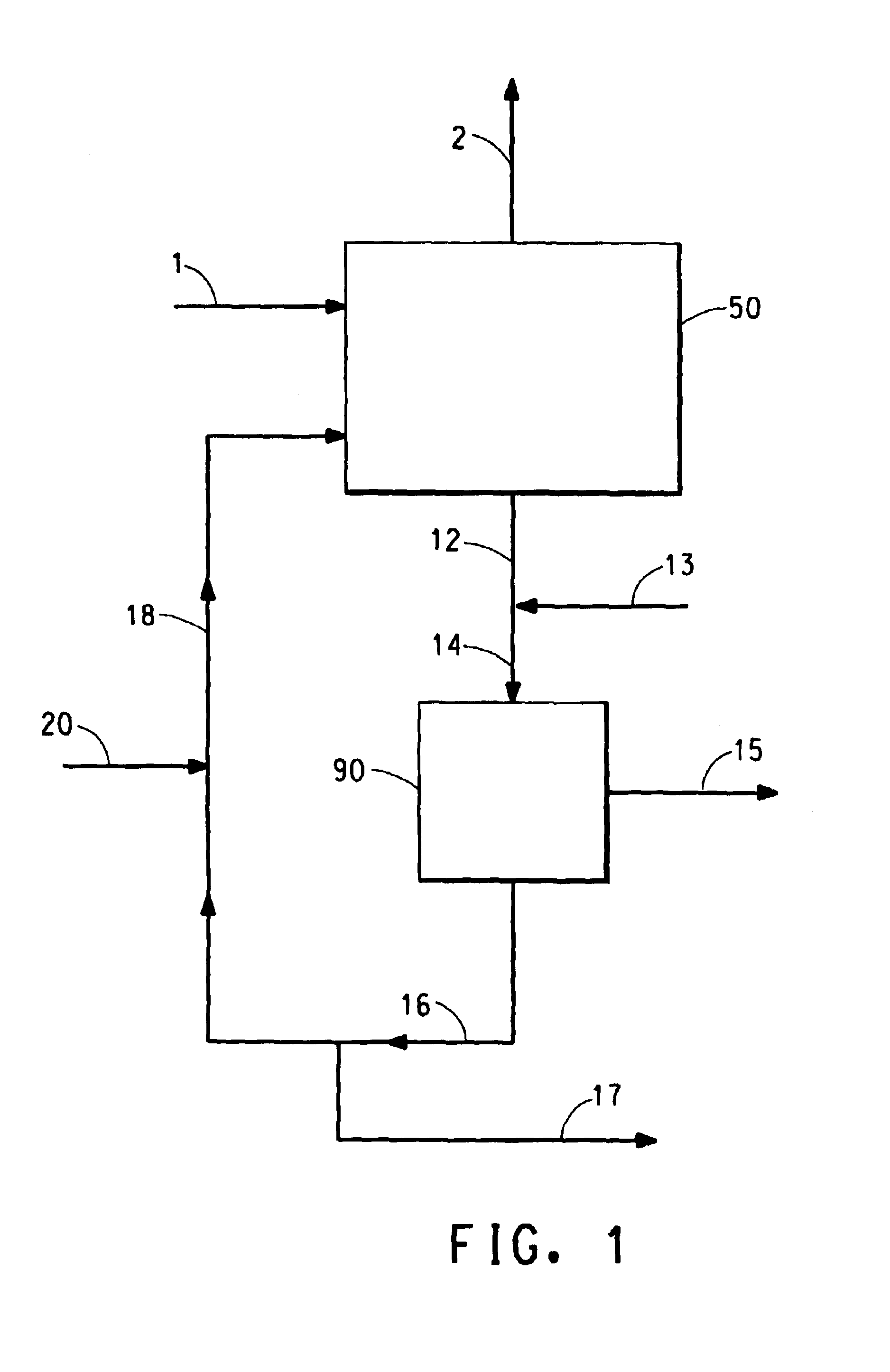High yield byproduct recycle process for anhydro sugar alcohols
a byproduct and anhydro sugar alcohol technology, applied in the field of anhydro sugar alcohols, can solve the problems of affecting product quality, substantial loss of product, and incomplete reaction mass, and achieve the effect of reducing the number of byproducts, and improving the quality of products
- Summary
- Abstract
- Description
- Claims
- Application Information
AI Technical Summary
Benefits of technology
Problems solved by technology
Method used
Image
Examples
Embodiment Construction
Production of Isosorbide at Nominal 18 Million lbs / Year
Referring to FIG. 1, 45% by weight aqueous sorbitol solution is introduced via line (1) at a rate of 8490 lbs / hr to the simultaneous reaction-separation equipment represented in FIG. 1 as block (50) and shown in detail in FIG. 2. The stream contains about 21 lb-moles of sorbitol and about 259 lb-moles of water. Referring to FIG. 2, aqueous sulfuric acid, 10% by weight, is injected via line (20) at a rate of 200 lb / hr in sufficient quantity to maintain the sulfuric acid concentration at 0.5-0.6 weight % of the sorbitol feed (water-free basis). Heat input to stage heaters (51), (52), and (53) is adjusted to maintain the temperatures at 125, 135, and 145.degree. C., respectively. Pressure in the head-space above the third stage is maintained at about 18 to 20 mm Hg. The dehydration reaction through all the stages forms about 16.8 lb-moles of isosorbide in 80% yield. 4.2 lb-moles of starting sorbitol go to byproducts comprising most...
PUM
| Property | Measurement | Unit |
|---|---|---|
| temperature | aaaaa | aaaaa |
| vapor pressure | aaaaa | aaaaa |
| vapor pressure | aaaaa | aaaaa |
Abstract
Description
Claims
Application Information
 Login to View More
Login to View More - R&D
- Intellectual Property
- Life Sciences
- Materials
- Tech Scout
- Unparalleled Data Quality
- Higher Quality Content
- 60% Fewer Hallucinations
Browse by: Latest US Patents, China's latest patents, Technical Efficacy Thesaurus, Application Domain, Technology Topic, Popular Technical Reports.
© 2025 PatSnap. All rights reserved.Legal|Privacy policy|Modern Slavery Act Transparency Statement|Sitemap|About US| Contact US: help@patsnap.com


